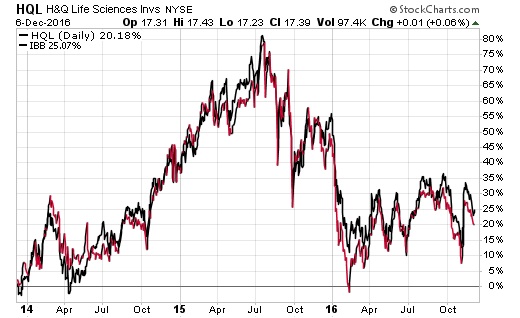The closed-end fund marketplace is one of over 500 offerings that span virtually every global asset class. This makes the landscape both ripe with opportunity for savvy participants and consequently laden with pitfalls for those who misunderstand this vehicle.
Closed-end funds should be considered advanced tools by their nature. These funds are typically more expensive than an open-ended mutual fund or ETF and often target sophisticated investment strategies. The use of leverage and options create a myriad of risks that must be understood and managed. Furthermore, the industry-specific rules allow for a much different experience than conventional vehicles.
The following are numerous pitfalls that investors often make when choosing a closed-end fund to complement their portfolio.
1. Dividends As Return of Capital
Most investors enter the CEF marketplace for the yields. After all, these funds often pay dividends that are many orders of magnitude greater than an unleveraged fund. The board of directors for each closed-end fund are typically the ones who set the yield and it is subject to change at the board’s discretion.
However, unlike a traditional ETF or mutual fund, a CEF can pay out far more than it is actually earning in income from the underlying assets. They call this excess “return of capital” (or ROC for short) and it should be viewed as an undesirable trait among funds that rely heavily on this feature.
Return of capital means the fund is essentially just paying money out of its asset base to meet its distribution schedule. It’s like the yield is a mirage altogether. Something designed to lure investors who like the thought that they are getting a big paycheck each month or quarter.
Now return of capital isn’t always a bad thing. Some CEFs are able to generate most of their yield and need a small boost to get them all the way to their managed distribution. However, it’s most egregious when 80% of the income or more is manufactured using this method.
I have seen this trait most often implemented in equity CEFs that own stocks that generate very little income. For example, the GAMCO Global Gold Natural Resources Fund (NYSE:GGN_pb) is a prime user of return of capital to pay its hefty income stream. That type of misdirection immediately disqualifies it for my style of investing.
2. CEFs Masquerading As Expensive Index Funds
Closed-end funds are usually much more expensive than traditional ETFs, index funds, and even some actively managed mutual funds. Their annual expense ratios usually start near 1% on the low end and can reach past 3% in some instances. As such, you should have the expectation that they are implementing a unique strategy to create alpha above a passive benchmark.
While many CEFs are engaged in just that endeavor, there are some that quietly act very similar to a passive index. If the top 5 holdings in your CEF are eerily familiar to a sector-style ETF or a strategy that you can own for a fraction of the cost, then don’t buy the fund. This is especially true if the CEF isn’t actively implementing leverage or some other unique differentiating factor to earn its larger fee.
For instance, the Tekla Life Sciences Investors Fund (NYSE:HQL) is a $380 million CEF that invests primarily in a basket of biotechnology stocks with a total net expense ratio of 1.23%. It doesn’t currently employ any leverage and it has a stated distribution yield of 9.21%. The interesting thing is that a 3-year chart of this fund versus the iShares ETF NASDAQ Biotechnology shows a very similar total return pattern. IBB only charges an expense ratio of 0.47% annually.

I also don’t know many biotech companies that pay 9% yields. So to make that distribution, HQL is going to have to rely on either return of capital or distribution of realized capital gains.
I’m not trying to single out HQL as a bad investment because it may well outperform other equity strategies in the long-term. However, there are a myriad of sector and simple factor selection CEFs that can probably be replaced with a cheaper ETF equivalent. The point is to make sure there is a definable value proposition in the CEF strategy above just a pseudo-passive index.
3. Price Patterns That Differ From Asset Class Expectations
Investors have certain expectations when they purchase a fund tied to a specific asset class. For example, a stock-based fund should rise when the S&P 500 index moves higher or a bond fund will see its price inversely tied to interest rates. This is usually true for open-ended funds that trade at net asset value (NAV) daily. However, it can be a much different story in a closed-end fund.
Because a CEF can trade at a premium or discount to its NAV, it can diverge from the broader market and sound logic. These vehicles are often more susceptible to investor sentiment rather that the exact weighted price movement of the underlying holdings. That is why they are prone to overshooting on the way higher and the way lower.
In my experience, most CEFs trade as risk assets even if they are primarily made up of bonds. This makes for an interesting psychology to adapt to and is why they aren’t always the best tools for those who want strict adherence to conventional asset classes.
This is also why it’s best to be a buyer of CEFs after they have experienced a period of discount widening or premium compression. Volatility should be your friend in this investment vehicle and looked upon as an opportunity-generating mechanism.
Investors who are just getting started with CEFs should spend time watching how they perform in relation to their NAV trends. You can find these chart patterns on free websites such as Morningstar.com or CEFconnect.com.
The Bottom Line
Closed-end funds are exciting tools for income investors who understand the functions of the vehicle and how the underlying portfolio is positioned. They can be used as both tactical positions to supplement diversified core exposure or as an independent strategy with alpha-generating potential. Those who have the most success understand both the risks and opportunities that these funds create and are comfortable with their quirky nature.
Disclosure: FMD Capital Management, its executives, and/or its clients June hold positions in the ETFs, mutual funds or any investment asset mentioned in this article. The commentary does not constitute individualized investment advice. The opinions offered herein are not personalized recommendations to buy, sell or hold securities.
